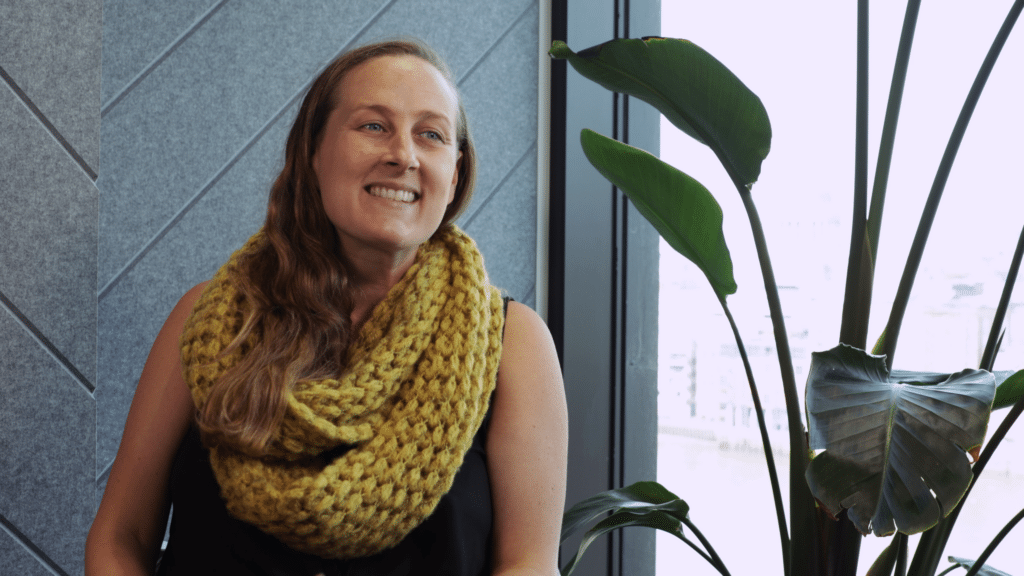Case Study
Exploring the customer changes required and providing recommendations supporting product selection.
Amplify Goods is a unique B2B hygiene brand balancing function, carbon, plastic and social impact. The company is determined to increase its circular maturity by introducing a new offering to its soap product line and is currently considering various circular business models (CBMs).
Clarasys has launched a toolkit for “Creating Customer Experiences in a Circular Economy” comprising a set of practical considerations, tools, templates, and examples designed to assist businesses with engaging customers in circular product and service adoption.
Amplify Goods and Clarasys worked together to apply this toolkit and explore the changes in roles and behaviours required of customers across its supply chain for different models and provide recommendations supporting the product selection.
1. Who is your customer?
Amplify Observations:
Our work with Amplify Goods gave us a first-hand view of the challenges of making product or design decisions when there are a high number of customer profiles and a complex value chain.
We didn’t just ask ourselves “who are we designing for?” Since many customers with different roles were involved in delivering and maintaining the value of the model, it was also important to ask, “how are we designing for them?”
Let’s take the cleaning operative and the facilities manager as two example profiles. The cleaning operative needs to take on new tasks and behaviours to ensure the product is delivered successfully to the end consumer (the person washing their hands). The facilities manager will often advise the end client (corporate office) on transitioning to a different product. Designing for these two profiles is very different. The customer profile of the cleaning operative is actively involved in delivering value to the end consumer and they are likely to encounter challenges in making changes to their behaviour to do this successfully. The facilities manager is a decision maker or influencer in the buying process and they are likely to encounter challenges in their understanding, awareness, and motivation to perform this role effectively.
There was a subtle difference in how these profiles needed to be accommodated to overcome their respective behavioural challenges. We needed to intentionally design for each of the cleaning operative’s journey steps, whereas product design or selection, communication, and education were more important when designing for the facilities manager.
Takeaways
Accounting for multiple personas across a value chain significantly increases complexity and effort but it’s important to consider each profile if the CBM design is to be successful.
Therefore, categorise customer profiles and plan an appropriate approach to accommodate them in the design process. For each customer profile in the value chain, consider two things:
- Relative engagement – how much active involvement does the profile have in delivering or maintaining value in the CBM? Consider exploring the profile’s experience by understanding and intentionally designing for the behavioural challenges that might be encountered in performing the tasks required of the new role.
- Relative value chain influence – how much influence does the profile have in the transition to and use of the CBM? Consider exploring the profile’s motivation, awareness, and understanding. Intentionally select products to meet decision-making criteria and craft communication to tap into both motivators and educational requirements.
2. What does understanding your customer really mean for your circular business model?
Amplify Observations:
While working with Amplify Goods, we learnt that traditional customer decision-making criteria such as cost and quality were still hugely important for customers considering the new circular soap offering. We were told the new innovative soap solutions needed to be “comparable price wise to what we’re currently using”.
We also discovered that cost and quality of the circular soap product were assessed in a different way to more typical products which did not always account for wasted soap and time spent transporting or dispensing.
Customers described sustainability in binary terms, suggesting sustainability was something to be achieved rather than iteratively improved.
Customers’ ability to critically evaluate sustainability options was limited – with a need to balance waste, water, carbon and social value factors. For example, PVA soluble soap sachets were believed to be more sustainable because they reduce packaging but there was no consideration for the unseen micro-plastics created in dissolution.
Takeaways
- Different customer profiles and personas will be influenced by different aspects of circular performance of a product or service. Therefore, prioritise communicating the value that’s actually important to your customer.
- For a small cohort, a product will be more appealing if it has better circular credentials. For many, meeting the status quo for circular performance is a binary requirement and performance beyond this has little or no influence. For others, circularity performance will not factor into their buying or using behaviours at all as other attributes (such as cost or quality) are still more important. Awareness of circular maturity is an added complexity for customers.
- Organisations need to extend and enhance their understanding of customers by exploring the influence of circular performance on buy and use behaviour and digging deeper to ascertain levels of awareness and education on circular maturity.
3. Playing the long game with organisational goals
Amplify Observations:
Through our work with Amplify Goods, we discovered the circular performance of a soap product wasn’t typically the most important criteria or the best understood. But for the Amplify Goods team, the ambition behind the new offering in their product line was about nudging and encouraging the market towards increasingly circular products. This meant that de-prioritising or de-valuing the circular performance of their product felt at odds with the mission of the brand. So, the question we considered was “how do we deliver on our ambition with a product that our customers actually want?”
Takeaways
- As we know, moving away from linear business models requires a shift in mindset for consumers and the adoption of new roles and behaviours in maintaining value of the product or service. We also know that this shift won’t happen overnight. Organisations need to recognise that achieving circularity goals in their transition from linear to circular business models might not be possible with the first incarnation of a product or service.
- Understanding customers’ perceptions of the value proposition is key to understanding their propensity to change from either a linear or less circular business model. Organisations can then explore “how transformative” and “how quickly” their proposed circular business model can be to ensure customers engage.
- This isn’t to say organisations should relinquish their ambitions to transform how customers engage with their products or services, only that stretching your circular agenda beyond the tolerances of your customers might limit or even reduce your ability to have an impact.
Taking this forward…
As you can see, the road to circularity isn’t without its hurdles and at times conflicting customer needs. Here are a few suggestions on how you can start tackling this:
- Calibrate your product and experience design decisions across desirability, feasibility, viability, and circularity being careful to evaluate any compromises you are making and the impact to your circular scorecard.
- Develop a roadmap that incrementally improves the circular performance of your product within an acceptable tolerance for your customer.
- Target customers with a higher propensity to change based on their current expectations.

